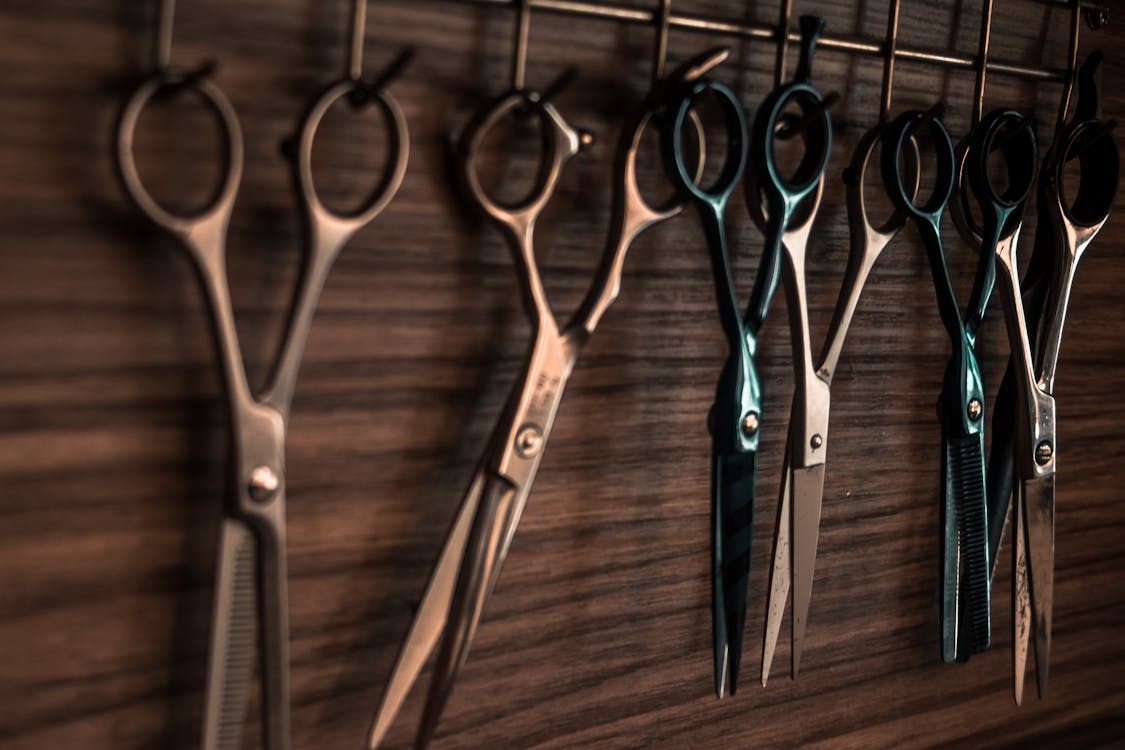Sharpening service Specialized for Groomers
Sharpening service Specialized for Groomers
If you are a professional is aware of how important it is to have sharp knives. This not only guarantees the efficiency of your work and precise, but it also aids in avoiding potential injuries. This is where the honing steel comes in. Honing steel is a crucial tool for anyone who is a serious butcher or chef, but how exactly does it work? And why is it so vital to your knife proficiency? The article below will address these questions and many more while we talk about the advantages of honing steel as well as the best ways to use it.
What is honing steel?
Honing steel (also known as sharpening iron) is a long metal rod with a ridged surface that is employed to maintain and sharpen the edge on knives. It is made up of two components of the rod, the rod itself and the handle that houses an elongated grip for safe handling. The rod itself has the ridges running lengthwise along the body. These ridges form edges when the blade is passed across them. If honing steel is done correctly, it will create an ultra-sharp edge on the knife blade, which is more durable than use whetstones or electric sharpeners by themselves (1).
What are the advantages of honing steel?
One of the biggest advantages of honing steel is that it can help prolong the lifespan that your blades last. By regularly running your blades across the ridges of the honing steel, you will keep them sharper over longer periods of time , by aligning the edges that are dull or jagged as time passes (2). This will save you time and cost in the long run because you don't have to buy new blades as frequently! In addition, because honing stainless steel isn't as abrasive as other sharpening tools, such as whetstones and grinders, it will not harm or wear out your blades over time (3).
Another advantage of honing steel is the safety aspect: When used properly it prevents accidental cuts from dull blades by creating a razor-sharp edge every time you employ honing steel (4). When cutting through tough materials, dull blades can easily cause slips or nicks. Regularly honing steels can ensure that blades remain sharp and lower the risk of injury by a large amount.
How can I use my honing iron correctly?
Honing steels properly requires patience and skill; Here are some easy steps to follow:
- 1) Start by holding your knife perpendicularly to the rod not against it, around a 20-degree angle (5).
- 2) 2. Move the blade gently down one side of the rod, making steady progress until you reach its top; then repeat the motion on the other side, applying gentle pressure with each movement (6).
- 3.) You must ensure that you maintain a consistent angle throughout every stroke. An angle that is too small can result in an unproductive edge, while too much will harm the blade (7).
- 4) Once each side is completed in a uniform manner, slowly work your way up towards the base until all areas are taken care of before repeating the strokes from tip to base many times, based on how sharp you want the edge of your blade to be.
- 5) Lastly, complete by wiping any metal shavings using a damp cloth prior to saving them to use in the future!
Conclusion
To summarize the point, honing steels are vital devices for any fan looking for a precise edge on their knives, without making unnecessary damage or wear and tear due to abrasive tools such as whetstones and electric sharpeners. They'll not only reduce your costs over time due to extending blade life, but they also create more secure and sharp cutting experience each time you use them! Just remember: take care when using them and always be patient and precise with each cut. Good luck!
Sharpening Serated Knives
Serrated knives are useful for a variety of tasks, from slicing vegetables to cutting through tough meats. But when the serrations on your knife become dull then it's time to sharpen the blades. In order to do that, you need diamond sharpening steel. A diamond sharpening steel is an invaluable tool for any professional or home cook. It allows you to swiftly and precisely sharpen not just straight-edge but also serrated cutting tools and scissors.
The best method of sharpening your serrated knife is with diamond cutting edge stones. This type of stone is constructed from diamonds, and is extremely durable. The harder the stone, the sharper its blade. Diamonds can cut through any kind of material easily. They are utilized to create jewelry , and are very expensive.
There are plenty of ways to sharpen your knife, without spending hundreds of dollars. You can make use of a standard filet knife or a bench grinder and even sandpaper.
There are a variety of stones that can be purchased at your local hardware stores. Some prefer Emery paper that is less expensive than a diamond stone. If you're looking to see the most impressive results, you must opt for a diamond stone.
What is a diamond-sharpening steel?
A diamond sharpening steel (also called a honing rod) is a vital instrument to keep your kitchen knives razor-sharp. It has a diamond abrasive surface, which makes it ideal for sharpening straight-edge blades and serrated edges. The fine grit of the diamond surface aids in eliminating burrs and nicks from the blade edge while also rearranging the metal fibers to ensure that they meet perfectly when reattaching the edge of the blade. This makes sure that the knife is able to hold its new edge longer than with other types of sharpening rods or stones.
Utilizing the Diamond Sharpening steel to Sharpen Serrated Knives
Sharpening serrated knives requires specific techniques that differ from those that are used to sharpen straight-edged blades. Before you use your diamond sharpening tool be sure to go through the instruction manual for your specific product as the directions can differ depending on the type of rod that you purchased.
- Step 1: First, use a soft cloth to clean off any food particles or dirt from the blade. Next, you'll need your diamond sharpening steel to enhance the sharpness of the blade.
Step 2. Take the handle of your diamond sharpening iron firmly in one hand, while holding the blade of your serrated knife to its lengthwise surface at an angle between 20 and 30deg in relation to its lengthwise side (as illustrated on Figure 1.). - Third step: Carefully move your knife down its long sides by alternating back and forward motions until all of its serrations are brushed against it several times (as shown in Figure 2.). Do not push too hard or move too quickly--this could result in damage to your knife's edge and the surface of your honing rod!
- Step 4: Once all the serrations of your knife have been brushed against it several times Repeat Step 3 over each individual serration until you are getting the results you want (as as shown in Figure 3).
- The 5th step: In order to top it off, give each individual serration one final brushing with gentle pressure. Then, wipe off any remaining residue using an absorbent cloth before storing them away safely!
Conclusion
Sharpening serrated knives can be a challenge If you're not aware of how to do it; however with the proper techniques and proper care you can keep these tools well maintained with just a few quick strokes on a quality honing rod such as diamond sharpening steel! Follow these steps whenever you need to touch up or alter the shape of your knife's edges. You'll be happy you did!
Learn more here:
Zdravje in Dom Kombuča shears sharpening knife cutting tools

